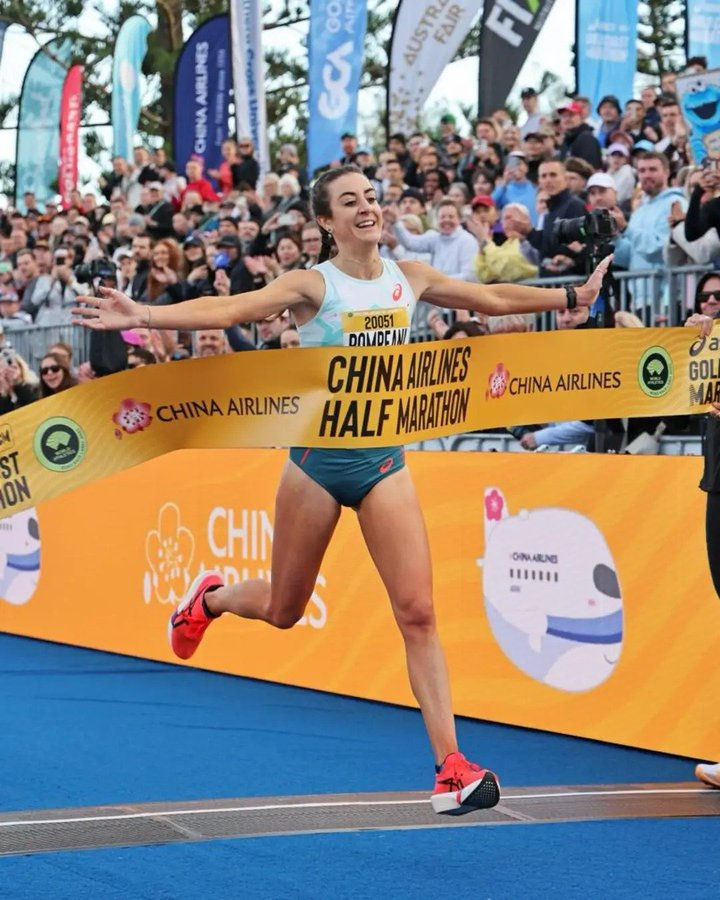Leanne and The Sydney Marathon (World Major)
- desproctor
- Sep 30
- 4 min read
Updated: Oct 2

At 11:47 a.m. on June 10th, I received a text from Leanne: “I think I’m done, I’m out of everything at this point.” She was convinced the Gold Coast Half was off the table, and even the Sydney Marathon seemed unlikely. I didn’t respond immediately. By then, she had already lost about five weeks of running to a stubborn calf strain that refused to settle.
That evening, I sent my reply: “Run 60 minutes on the treadmill—stop if it tightens up.” She did the full hour. Just like that, we were back in business.
One of the most important lessons I’ve learned as a coach is the power of listening first. Then comes the harder part—finding the right response. Despite the lack of running, Leanne had maintained strong fitness through cross-training: long sessions on the elliptical—including a 1 hour 45 minute grind with 60 minutes of quality work—and plenty of cycling.
When she returned to running, the focus was on easing her in and rebuilding confidence. With just over three weeks until the Gold Coast Half, the question was: What kind of training block can you design for an athlete in such a short window? Here’s how her final lead-in looked with main sessions:
Week 1 (94K)
Tuesday: 2k threshold + 3×1600m alternations + 3×1k threshold
Thursday: 3k threshold + 2×1500m threshold + 4×1k threshold (60–75s rest)
Saturday: 1k threshold / 1500m 10k pace ×4
Week 2 (186k)
Tuesday: 2k threshold + 3×7min (1min on/1min float) + 2k threshold
Thursday: 3×3k + 3×1k threshold (60s rest)
Saturday: 13k surging hills, 21k total
Week 3 (180k)
Tuesday: 2×1k threshold + 2×1k faster + 3×400 (2min rest) + 3×1k threshold
Thursday AM: 6×6min sub-threshold on treadmill
Thursday PM: 8×1k threshold (60s rest)
Saturday: 35k long run, final 10k push
Week 4 (Race Week) (125k)
Tuesday: 2×200 + 2×1k threshold + 4×800 at 5k pace + 3×1k threshold
Thursday: 3k threshold + strides
Saturday: Gold Coast Half Marathon – 69:14, 1st place

Her Gold Coast performance showed she was in better shape than we’d hoped. Running 3:16/km for 21.1k off a less-than-ideal build was encouraging. From there, the focus shifted to the Sydney Marathon—42.2k at 3:25/km on a challenging course. Patience, careful planning, and a bit of luck would be key.
Weeks 5–8: Marathon Build
Week 5: (191k)
Monday: 35 km easy
Thursday: 8×6 min at threshold pace with 1 min recovery jog
Saturday: 13 km surging hills
Sunday: 35 km controlled at ~4:00/km pace
Week 6: (198k)
Tuesday: 2×1 km threshold + 6×1 km on 4:30 cycle
Friday: 22 km marathon-specific (alternate 1 km on / 1 km float)
Sunday: 38 km long run with last 10 km pushed
Week 7 (Sydney 10k focus): (131k)
Tuesday: 3200 m threshold + 4×800 m at 10k pace + 2×400 m fast + 3200 m threshold
Wednesday: 16 km steady
Thursday: 3 km threshold + 4×200 m strides
Sunday: 10 km race – 32:27
Week 8: (208k)
Monday: 37 km easy
Wednesday: 10×6 min treadmill intervals at threshold pace, 1 min recovery
Friday: 2×7 km + 1×4 km (cut short)
Sunday: 35 km solid long run
By the end of Week 8, weekly volume peaked at 208 km. Influenza B then interrupted training, requiring careful adaptation and recovery.
Final 4 Weeks Before Sydney Marathon
Week 9: (180k)
Saturday: 3×4 km with 1 km float jog between reps
Sunday: 35 km over hills, running by feel
Week 10: (182k)
Tuesday: 2×200 m fast + 1 km threshold + 6×1 km on 4:30 cycle+ 2×400 m + 1×200 m + 1 km easy
Friday: 3×6 km with 1 km float jog between reps
Sunday: 30 km at ~4:00/km over hills
Week 11:(133k)
Tuesday: 2x200+1x1k threshold +3x1600 as 400on/200 float +1x1600 200float/200on +1k threshold
Thursday: 6×1500 m on grass at threshold pace
Saturday: 1500m threshold + 6×1 km 4:30 cycle 1500m threshold
Sunday: 16 km easy recovery
Week 12 (Race Week): (113k)
Tuesday: 4×1 km + 4×200 m strides
Friday: 3 km threshold + strides
Sunday: Sydney Marathon – 2:24:47, fastest Australian on home soil
Watching Leanne achieve that performance was a privilege. Her resilience, discipline, and trust in the process were inspiring—and it leaves me excited for her next marathon journey.

Reflection
This wasn’t the perfect build, but several key factors contributed to Leanne’s improved performance compared to Nagoya.
Long runs in cooler conditions: The consistent, hard long runs on Sundays, combined with cooler weather, had a significant positive impact.
Training volume and sessions: Regular Tuesday track sessions with solid volume were valuable. This block also excluded double-threshold days, apart from one early session (6 × 6 minutes on the treadmill and 8 × 1 km on the track). This adjustment supported better recovery and allowed her to hit the bigger sessions when they mattered most.
Balanced session structure: A regular pattern of Tuesday/Friday quality sessions proved effective and is likely to become the model for her next marathon. Contracting the flu four weeks out—though not ideal—may have worked in her favour, as she still logged 180 km but at mostly easier effort, which provided recovery without overreaching.
Variety in training: A hard run over hilly terrain, exposure to some heat training, and early use of the altitude chamber all added valuable resilience.
Experience: Leanne’s growing experience continues to be an asset, helping her navigate both training and racing with confidence.
Sustainable load: With only one week above 200 km, her training load was more measured. She arrived at sessions consistent, ready, and with minimal complaints. Importantly, she wasn’t overly focused on chasing high mileage during this block.
Race preparation: Two lead-up races—a half marathon and a 10 km—provided sharpening opportunities while also giving her the chance to back off training when needed.
Overall: This block achieved a stronger balance between quality, recovery, and experience, all of which came together effectively on race day.








Comments